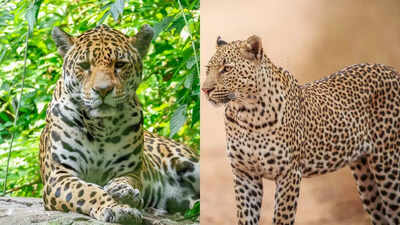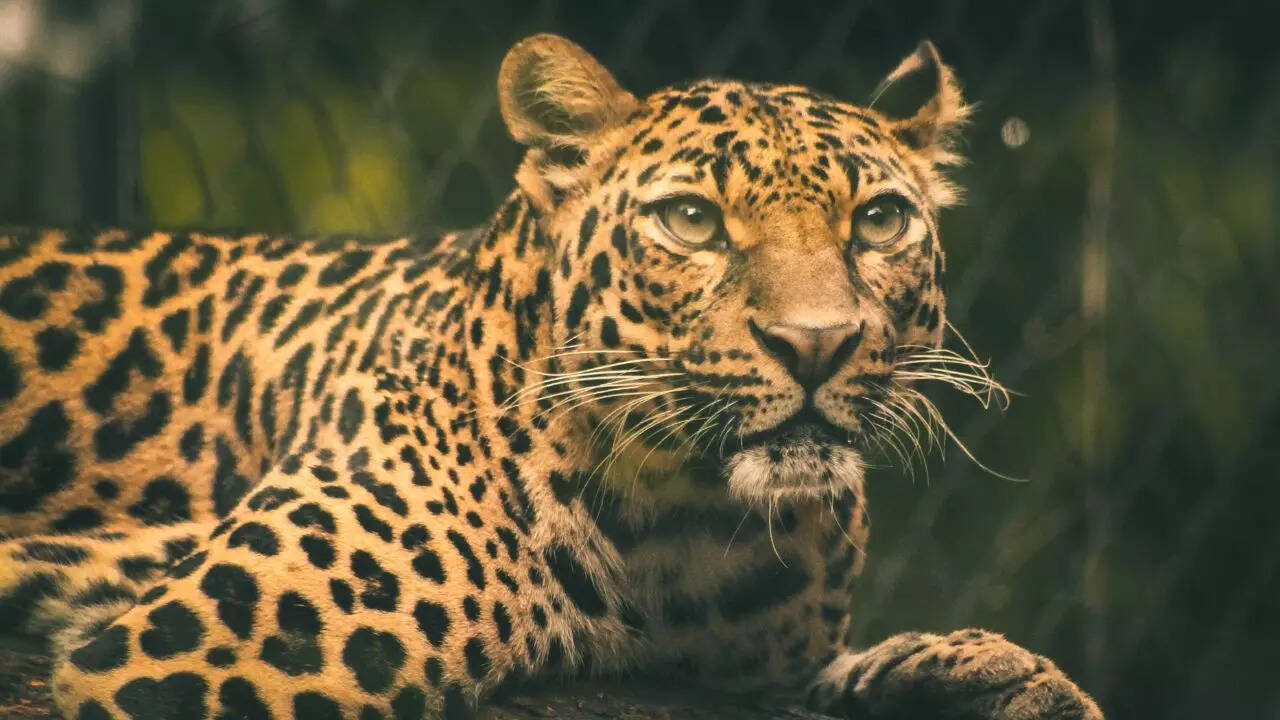ARTICLE AD BOX

At first glance, jaguars and leopards appear strikingly similar, muscular, golden-coated big cats adorned with captivating rosette spots. Yet, beneath their lookalike exteriors lie fascinating differences shaped by evolution and geography.
While jaguars prowl the rainforests and wetlands of Central and South America, leopards roam the grasslands and forests of Africa and Asia. From their hunting style and body build to their distinctive spot patterns, these two Panthera predators have adapted uniquely to their habitats. Understanding the difference between jaguars and leopards not only reveals nature’s intricate design but also deepens appreciation for these powerful, elusive, and endangered big cats that rule their respective corners of the wild.
How to tell Jaguars and Leopards apart; spot the differences
| Trait | Jaguar | Leopard |
| Size | Larger, stockier | Smaller, leaner |
| Spot pattern | Rosettes with inner dots | Rosettes without inner dots |
| Preferred habitat | Forests, wetlands, rivers | Savannas, forests, mountains |
| Hunting style | Ground-based, powerful bite | Tree-based, stealthy and agile |
| Conservation status | Near threatened | Vulnerable |
Physical characteristics: Shape, size, and strength
Jaguar

Jaguars are generally larger and more muscular, with broad heads, powerful jaws, and a compact body built for strength rather than speed. Weighing between 80 and 350 pounds, they are the third-largest big cat in the world after tigers and lions. Their shorter legs and stockier frame make them exceptional ambush hunters.Leopard

Leopards are leaner and lighter, weighing between 37 and 198 pounds. Their long tails help them balance in trees, where they often stash their kills.
This agility gives them an edge in climbing and stealth, allowing them to move silently through savannas and forests.
Spot patterns: The visual difference
The most reliable way to tell these cats apart lies in their spots.Jaguars have larger rosettes with distinct black dots in the centre, forming intricate patterns across their coats.Leopards, on the other hand, have smaller, tighter rosettes with no inner spots.From a distance, both look similar, but up close, the difference in pattern detail becomes strikingly clear.Additionally, both species can exhibit melanism, a genetic trait that results in all-black coats, which are commonly referred to as black panthers. The spots remain faintly visible in good light.
Where Jaguars liveJaguars are native to Central and South America, with the Amazon Rainforest as their stronghold. They are the most aquatic of all big cats, thriving in wetlands, flooded forests, and dense jungles. They can swim long distances and often hunt near rivers and lakes.Where Leopards liveLeopards have a much wider distribution, found across sub-Saharan Africa and parts of Asia, including India, Sri Lanka, and China. Their adaptability allows them to survive in environments ranging from deserts and savannas to mountain ranges and forests.
Behaviour and hunting styles
Both jaguars and leopards are solitary, stealthy predators, but their hunting techniques differ due to environment and anatomy.JaguarsJaguars rely on ambush and brute strength. Their bite is so powerful that they can pierce the skulls or crush the shells of prey such as capybaras, caimans, and turtles.
They prefer hunting on the ground or in water, making them expert swimmers.LeopardsLeopards are masters of stealth. Their slim, agile bodies allow them to drag heavy kills up trees, a strategy that protects their food from scavengers like hyenas. They hunt antelope, monkeys, birds, and smaller mammals, adapting easily to local prey availability.
Classification and taxonomy
Both jaguars and leopards belong to the genus Panthera, which includes lions (Panthera leo) and tigers (Panthera tigris).The jaguar (Panthera onca) is a single species, though earlier classifications recognised up to nine subspecies, such as the Arizona jaguar (P. o. arizonensis) and the Central American jaguar (P. o. centralis). The leopard (Panthera pardus) currently has nine recognised subspecies, including the African leopard (P. p. pardus), Indian leopard (P. p. fusca), Persian leopard (P. p. saxicolor), and the critically endangered Amur leopard (P. p. orientalis).Also read | Sun Bear vs. Moon Bear: Understanding the physical, behavioural, and ecological differences that shape their survival

 6 hours ago
3
6 hours ago
3








 English (US) ·
English (US) ·